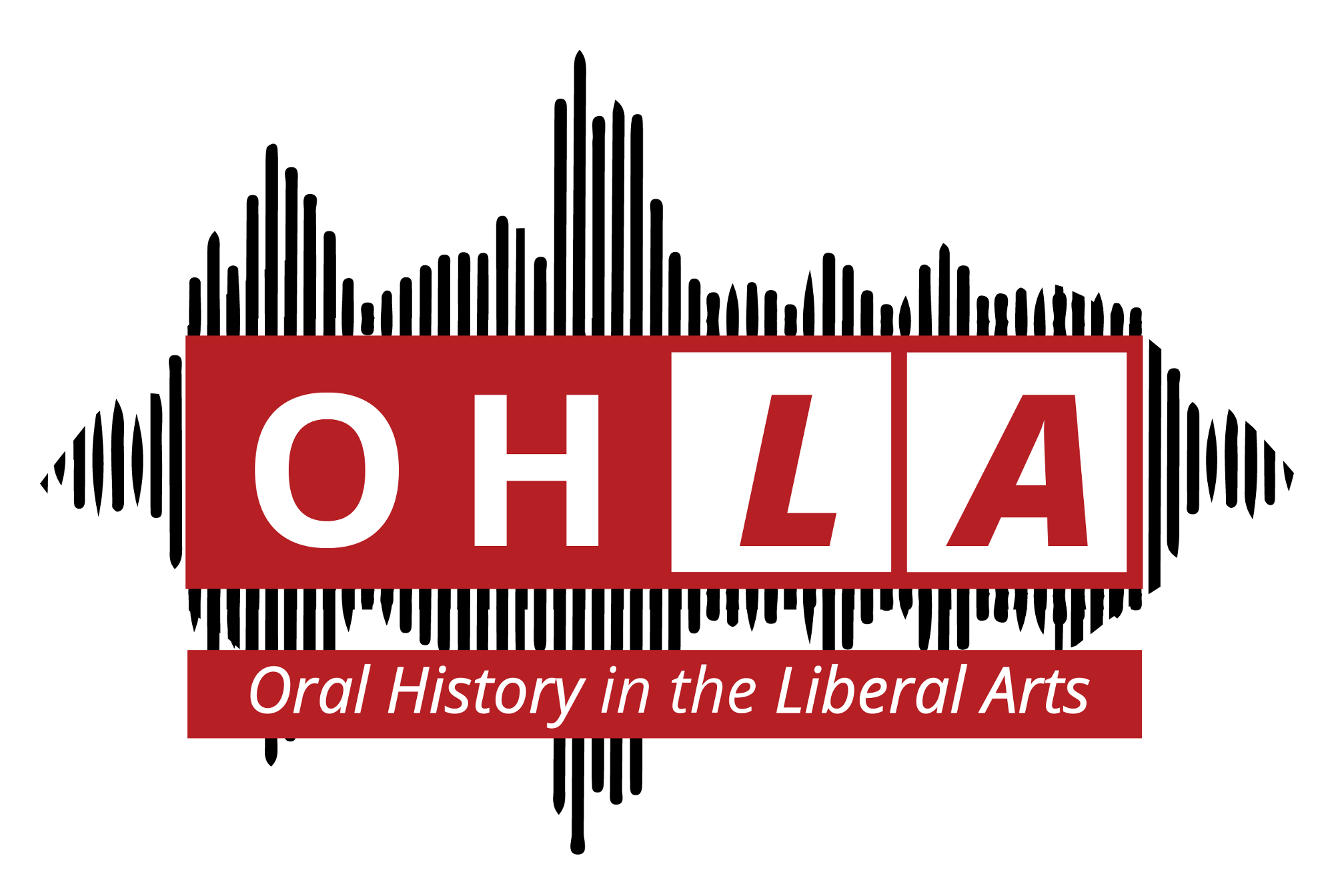As I was a child, many of my cousins didn’t understand me. Instead of running off to play when dinner with them and their parents was finished, I liked to stay up listening to the stories my family relayed about work, vacations, and, as I remember most vividly, their reminiscences about times past. I have always appreciated the oral tradition.
When I realized that I could apply my penchant for listening to my scholarly practice, sometime between July and September of 2015 when I spent my penultimate coop with Brooke Bryan’s new OHLA initiative, I was very excited. I could listen and, through listening, gain insight into my senior thesis research subject that I would not have had without doing so. In conceiving of Coloring the Gem City, I thought that conducting oral histories would be a good way to a) add a personal touch to my thesis, by including the lived experiences of actors involved with the Miami Valley Regional Planning Commission’s Fair Housing Plan (1969-1980, the nation’s first) in my written thesis, and b) that oral history would be a great exploratory method for delving into the post-war history of housing policy and the real estate market in the United States, which I had theretofore no knowledge of. I am grateful to have had the opportunity to conduct these oral histories, with the help and the support of Dr. Kevin McGruder and Brooke Bryan, respectively experts in the fields of real estate and African American history and oral history methodology.
I wanted to use the opportunity of having a grant to conduct oral history research to my advantage. Specifically, since my focus was the 1970s and my subject was considered contemporary history, I wanted to speak with those involved with the Fair Share Plan (“the Plan) to see if they could give me a personal and abridged version of the story of the Plan. This would help me guide my research and would save time in getting to know the literature of my topic.
My process began with having a sit-down with Dr. McGruder to discuss my subject of interest. He was of the utmost aid in nailing down the twenty or so books which would help guide my research. Dr. McGruder also helped me narrow my focus and keep my ambition in check; grad school would be there to offer the time I needed to tackle larger questions, so it was best to focus as much as possible on a manageable question. He also guided my thinking in terms of how I would go about forming my list of potential interviewees. Dr. McGruder pointed me in the direction of the archives which might be of most use to me: the Dayton Daily News and the Wright State Special Collections. He also pushed me to seek out public records, which turned out to be the biggest trove from which I culled my research. In poring over policy documents from this quasi-governmental organization, I would note down those actors that authored documents which told the readed the most about the MVRPC’s institutional and political legacy. I would then look up the people behind those names, and figure out whether they were living or not, and whether they’d like to be interviewed about their experiences there.
As I read secondary sources about the issues of segregation in the post-war city, I would take down the names of those scholars knowledgeable about the topic. Interviewing scholars on the topic might not rub veteran oral historians the right way, but I was encouraged by Brooke Bryan to expand my horizons in terms of what I understood as oral history. In the broadest conception of oral history as a subdiscipline of history, these interviews might be useful to a student one hundred years from know who wishes to learn about the historiography of my topic. Bryan helped me to see that historians should not only concern themselves with the past, but with the future of the past. Oral history, she claimed, was a great way to shift historians’ thinking in that direction.
After harvesting armloads of documents from the Special Collections at Wright State University, with the help of some very capable archivists, I began keeping an eye out for my interviewees. Some were obvious choices. One was the director of the MVRPC. Another was the head of the Fair Share Housing division of the organization. But, by keeping vigilant and by reading secondary sources in conjunction with primary ones, I found that there were interviewees who were both involved in the lower rungs of the administration and went on to become scholars of equity planning. These would be some of the most informative interviews in my new collection.
I recorded the names of my prospective interviewees in a spreadsheet, and narrowed down my selection to about twenty. I figured that I could count on fifty percent of them being unwilling or unable to participate. Then, I began the process of finding the people. This was no easy task.
I ended up relying on three tools to find the former members of the MVRPC with whom I was interested in speaking. The first was Google. But I used Google in a particular way. I searched not just for the names, which invariably returned thousands of false negatives, but the names plus any context clues that turned up in the primary or secondary literature. This led me to websites of organizations for which the subjects had worked subsequent to their tenures at the MVRPC. A second tool was Facebook. I had mixed results, but went about the searches in a similar way, looking for relatives of subjects and connecting the dots. The third tool was an online public record service called Spokeo. I could not have done any of my interviews without the help of this service. Using my OHLA funds, I paid for the full access to those profiles which matched in terms of age, employment history, and place of residence. Sometimes, I was wrong. I called and sent emails to people who were the “wrong” John Doe and not the Jane Smith which I sought. But fifteen or so of the subjects which I identified as important actors in the story of MVRPC I reached successfully, through email addresses or phone numbers provided by Spokeo. Each of these were happy that there was a spritely young scholar interested in their story, and in the history of fair share housing. I was pleasantly surprised. It occurred to me that my History professors had been right to say that doing history was akin to doing detective work.
When it came time to set up interviews, I followed a set of steps to prepare. I created and customized exactly four questions for each subject, depending on what I thought they might know about a given responsibility of MVRPC, and I sent the four to them a week or so before our agreed-upon meeting time. Many of my subjects thanked me for doing so. This gave them time to rack their memories, and to come into the interview hot instead of cold. In one instance, I gained access to a private archive by asking in advance. One subject brought a whole binder of rare documents (which none of the archives had) to the interview because I asked a question which she did not know the answer to, but thought that some documents she had might contain it. This was also a way of organizing my thoughts, so that when it came time to convert interviews to citations in my paper, I knew where to put them.
Brooke Bryan gave me much insight into the practice of active listening, and I gratefully put it to use in my interviews. My subjects and I stuck to the four questions. In some cases, an interviewee would take a full hour to answer one of the questions. I was satisfied with this because, even though we hadn’t covered fully the gamut, I knew that I had received a satisfactory answer to the first prompt which likely touched on the three other prompts anyway. Other times, fifteen minutes were spent answering each question. Bryan taught me that an important aspect of deep listening was to feel out the demeanor of the interviewee, to “go with the natural flow” of the interview and to not try to mold it into anything it wasn’t. I found this method to work well in my interviews. I also took seriously her idea that active listening involved taking notes. These would be invaluable to the process of indexing, so that instead of having to listen to all thirteen hours of interviews and re-notate the natural breaks in conversation and their encompassed subjects, I would rather make myself a guide to the conversation. It helped also to take down the runtime of shifts in conversation. Bryan’s methodology of active listening made the project easier to undertake and ultimately was a great guide to producing my best interviews.
In the end, I was able to provide ten or eleven finished interviews to OHLA.
I would have done many things differently in performing my research, but a couple of really important things stick out to me. The first would be to have undertaken the research during a co-op (or for the typical student, during the summer). While the only other duty I had to fulfill during the grant period was to write my thesis, this was a tall task. If I would have been able to devote all 40 hours of the week to this project, I wouldn’t have had to worry about spending the one and a half months after my grant period indexing and writing the case study. However, I think this proves that OHLA proposes to do something right. For the determined student, the proposed grant period will be more than sufficient to do the research as it is required by OHLA. Second, I would have taken my own advice to include the informed consent paperwork in the initial emails to my subjects to a) make sure they were fully aware of their rights and responsibilities b) avoid the headache of going back to ask people for their signature after the novelty of the interview had worn off. Both of these amendments would have been a boon to my project.
I’m very grateful for the patience of Brooke Bryan and Dr. Kevin McGruder in all of the time they devoted to me and the successful completion of my project. What OHLA is doing is important in many ways. It is offering students the opportunity to take on a significant research project, which furnishes them with the sufficient resources to do so. Without the funds, I wouldn’t have been able to take the time off of work to travel to Dayton more than fifteen times during my grant period; nor would I have had the proper equipment or access to the technical tools that I did. I also wouldn’t have been able to purchase articles about the MVRPC outside of the purview of Antioch’s library system. OHLA also offers enterprising students the opportunity to put forward a strong graduate school application. Without the support of my principal and secondary investigators, I wouldn’t have been admitted to the number of graduate programs I was. In each interview, my potential advisors were impressed with the work OHLA made it possible for me to do. I hope that it continues to afford students the opportunity to listen deeply, as it so graciously extended the opportunity to me.








